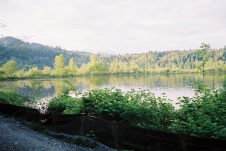The recent revelation that Richmond-based Kwantlen Polytechnic University has been acting as a paid lobbyist (though they eschew that label) for a highly contentious billion-and-a-half dollar real estate development atop farmland has brought to the fore some serious ethical questions. Namely, should publicly funded academic institutions be engaging in this sort of behaviour, and if so, do they have a duty to disclose such financial arrangements to the public and the bodies they lobby.
Documents recently obtained via Freedom of Information request on behalf of a group of citizens opposing the development of a 500-plus acre parcel of farmland in Tsawwassen’s Boundary Bay reveal a multi-tiered contractual arrangement between Kwantlen and developer Century Group. The Memorandum of Understanding (click here to see) included cash payments and other bonuses in exchange for the university extolling the virtues of a proposal to build 1,900 homes on the farmland known as the Southlands property…or as the document phrases it, to “articulate the sustainability of the land use proposal as part of the re-zoning application.”
The battle over this land extends back several decades, throughout which time the people of Tsawwassen and agricultural advocates across the region have steadfastly opposed the plan and successfully blocked development. Kent Spencer broke this latest chapter of the Southlands saga in The Province last week, adding the actual dollar figures to the details spelled out in the formerly secret M.O.U. document. It appears the university got $50,000 up front for its efforts, and would receive an additional $100,000 should the developer achieve the rezoning it’s seeking from the municipality to move the project forward; should the complex be built, Kwantlen would receive some vaguely defined benefits such as the use of an educational building on the property, built and owned by the developer – and the ability to do some horticultural research projects on the land that isn’t taken up by houses and roads (approximately 200 acres out of 540).
What has Kwantlen done so far to earn its fee? In addition to some “research” into the benefits of the proposal, a couple of professors from the school’s Institute of Sustainable Horticulture, Kent Mullinix and Arthur Fallick, have made favourable presentations to the municipality of Delta (of which Tsawwssen is a part), and other groups like Capilano University. Just having the university’s name attached to the concept is clearly of substantial value to the developer’s bid.
The fact that the university kept the deal secret is worse than the deal itself. While Century Group’s president Sean Hodgins – one of two signatories of the recently unearthed document, the other being Kwantlen president David Atkinson – has declined to comment in the media on the recent brouhaha, Kwantlen reps initially defended the university’s actions. But it appears now, as the story refuses to go away, that the university is changing its position and at least conceding the possibility that there may be something untoward about this deal.
Now The Province is reporting that Atkinson, in a misguided attempt at damage control, is calling for an investigation into the matter. An investigation is certainly appropriate – just not by Atkinson and Kwantlen… seeing how it is Atkinson’s own signature on the secret document at the root of the whole controversy. Mr. Atkinson apparently thinks it’s fine and dandy to investigate himself. That he can’t see the conflict there is baffling.
Perhaps the most damning evidence against the university lies in the chronology of events:
-May 20, 2009: Century Group and Kwantlen sign M.O.U.
-December 3, 2009: Kwantlen profs make presentation to Delta Council (without disclosing their financial relationship with the developer)
-March 2010: Tsawwassen resident files F.O.I. request with Kwantlen, obtaining the M.O.U. in late March
-April 9, 2010: Century Group posts M.O.U. on their website
-July 2010: The story breaks – only then does the university comment on its deal with the developer, when questioned by the media.
The first question that comes mind is why did Century Group post the M.O.U. on their site just weeks after their partner, Kwantlen, received the F.O.I. request for the until-then secret document – nearly a full year after the deal was inked. Could it have been to create some veneer of defence against the accusations of secrecy that were sure to follow the release of the document? The time to disclose things is before you get caught, not after.
While no longer in the Agricultural Land Reserve, the Southlands is designated for agricultural use by the municipality of Delta. The developer, who has tried for decades unsuccessfully to develop the property, is now rushing to get Delta to amend its own community plan and rezone the property for housing before Metro Vancouver completes its overhauled Green Zone plan, which is likely to entrench the agricultural designation of the Southlands, perhaps finishing off the development bid for good. The plan, it appears, was to get the municipality to fast-track the rezoning, as quietly as possible. It is thus ironic that this stealth strategy has in fact blown the story wide open and likely done far more harm than good to the developer’s plans – not to mention the university’s reputation.
Tsawwassen residents have long been opposed to the development of this property, having fought successfully in the 1980’s – in the longest public hearing in BC history – to keep the farmland from being converted into housing. In the 1990’s the community fended off a plan to turn the land into a golf course and homes. Golf courses were, in the 80’s and 90’s, the preferred method for getting around the ALR and other farmland protections. The idea was to build an unsuccessful golf course, then later fill in the fairways with houses when the golfing proved a bust. It was a neat trick and before long golf course proposals were popping up all around Delta and throughout the region. Sometimes it worked like a charm; other times – as in the case of the Southlands and another contentious property in Tsawwassen, the Spetifore Farm – the public fought back and successfully staved off development.
Today, the Southlands proposal is as unpopular as ever with Tsawwassen folks. A recent Ipsos-Reid poll commissioned by the city came back with 62% opposed to the developer’s plan – roughly double those in favour. This is in line with other similar indications of public disdain for developing the Southlands, including a series of public meetings and comment processes conducted by the municipality that have consistently seen in the region of 60-80% opposed. What many would prefer to see instead is the sustainable densification of the community’s town centre, while leaving farmland and green spaces as they are.
The people of Tsawwassen have good reason to feel this way – as should all British Columbians, given the dire state of our farmland and food security. According to a 2007 report by the BC Ministry of Agriculture and Lands (also pried loose by F.O.I.), in 1970 we produced roughly 80% of our own vegetables locally; today that number has plummeted to a paltry 40%! With increasing water shortages in California and Mexico – our chief suppliers of imported produce – this situation simply isn’t sustainable. Which is why the last thing we should be doing right now is building houses, industry, and highways atop what little precious farmland we have left.
This is why the concept being touted by Kwantlen’s agricultural profs and the developer here is troubling in and of itself. The M.O.U. is filled with a fancy new term called “agricultural urbanism,” which is really the golf course of today – serving to greenwash the development of farmland by promising things like farmers’ markets, “sustainable horticulture” research projects, and green spaces.
Critics of Century Group’s proposal don’t see it as 200 acres of mixed “agricultural urbanism” features – they see it as 340 acres of farmland destroyed for housing that could just as well go elsewhere. While the Southlands, a former potato farm, has been out of agricultural production for years, agrology reports show it could have class 1 and class 2 agricultural soils if it were properly irrigated and cared for. Some of the finest farmland in the world can in fact be found in Delta and the Fraser Valley – which is why it’s crazy to be paving and building over top of it in this day and age.
The issue with this latest twist in the Southlands story lies not with the developer. Developers care about what any other corporation cares about: making money. And they use the tools they have at their disposal to do so. In this case, arranging for a university to endorse their project under some new-fangled academic concept is an expedient thing to do – adding much-needed credibility to their embattled proposal. But the value of that endorsement depended greatly on the apparent independence of the “experts” speaking to the merits of the project. And therein lies the problem. This was a major misrepresentation by the university that changed the dynamic of the discussion – as it was intended to do. Had this not blown up in their face, one would almost have to congratulate Century Group for a shrewd investment – for, what is a couple hundred thousand compared to a billion and a half dollars worth of real estate? Talk about R.O.I.
A representative for the university, executive director for research Jason Dyer, said in defence of the arrangement that the monies they received would in no way influence the findings of their “research,” funded by the $50-150 K. Dyer told The Province, “Just because somebody pays the cost of research doesn’t mean the research is not independent. Costs have to be paid by somebody.”…Which of course is so preposterous it really bears no rebuttal – though Tsawwassen resident and member of the community group opposing the development, Dana Moslavat, took a stab at it: “With any research, the organization has a responsibility to divulge their funding sources so that the public may form their own opinions of any potential bias in the conclusions. Rather than an independent research institution, this agreement basically turns KPU into a lobbyist for Century Group.” Kwantlen initially felt there was nothing untoward about the deal and didn’t see the need to disclose it. “It is not normal for us to disclose our financial agreements,” said Dyer when confronted by reporter Kent Spencer. But if there was nothing wrong with the deal, then why keep it a secret?
Elvis Glazier, another Tsawwassen resident and member of the community group battling the project – who is also a Kwantlen alum who volunteers his time as the head of their millwright program advisory committee – sent a pointed letter to his alma mater this week. In it he correctly declared that what needs to be done now is not for the university to investigate itself, but for it to cancel its contract with the developer – thus leaving the lobbying to…well, lobbyists.
Now there’s a novel concept.
Watch for more on TheCanadian.org about the battle over the Southlands and the state of BC’s farmland and food security.


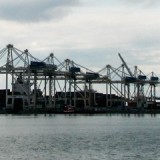
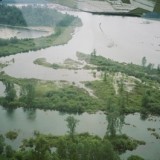
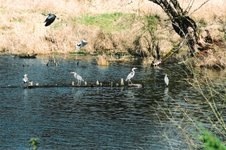 Significant rehabilitation of the aquatic ecosystem in the Stave River downstream of the Ruskin damn facility has been undertaken by BC Hydro and Fisheries and Oceans Canada over the last two decades. Extensive expenditures at the taxpayers’ expense were required to undertake this rehabilitation. Following the implementation of the fish-friendly system operations by BC Hydro and hatchery augmentation in the mid-1990s, the run of chum salmon increased from an escapement of a few thousand to over 0.5 million fish in some years.
Significant rehabilitation of the aquatic ecosystem in the Stave River downstream of the Ruskin damn facility has been undertaken by BC Hydro and Fisheries and Oceans Canada over the last two decades. Extensive expenditures at the taxpayers’ expense were required to undertake this rehabilitation. Following the implementation of the fish-friendly system operations by BC Hydro and hatchery augmentation in the mid-1990s, the run of chum salmon increased from an escapement of a few thousand to over 0.5 million fish in some years.
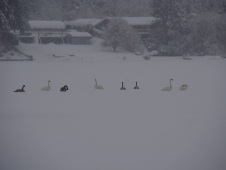
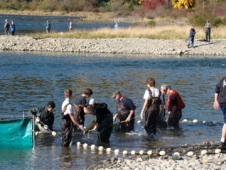 This lake development constitutes part of the large-scale loss of wetlands (greater than 90%) in the lower Fraser Basin that has occurred over the last 100 years. This project will constitute a further and major impact to these wetlands by increasingly isolating the Silvermere Lake portion of this ecosystem from the extant, relatively intact active floodplain of the lower Stave River, as well as interfering with riparian functions and adding extensive human activities (e.g., vehicle traffic to and from the Island).
This lake development constitutes part of the large-scale loss of wetlands (greater than 90%) in the lower Fraser Basin that has occurred over the last 100 years. This project will constitute a further and major impact to these wetlands by increasingly isolating the Silvermere Lake portion of this ecosystem from the extant, relatively intact active floodplain of the lower Stave River, as well as interfering with riparian functions and adding extensive human activities (e.g., vehicle traffic to and from the Island).
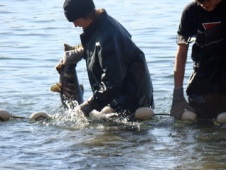
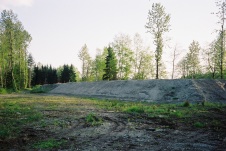 The developer’s application for harmful alteration, disruption or destruction (HADD) of fish habitat finally triggered a federal Environmental Assessment (CEEA) by DFO and Environment Canada in 2007 but was put on hold the day it was initiated on request of the developer. On Dec. 22, 2009, the CEAA (Canadian Environmental Assessment Agency) hearing was terminated by DFO without having been completed. DFO advised concerned residents to contact Environment Canada who stated that should species at risk be inadvertently killed by heavy equipment, it is not considered an offense by the ministry.
The developer’s application for harmful alteration, disruption or destruction (HADD) of fish habitat finally triggered a federal Environmental Assessment (CEEA) by DFO and Environment Canada in 2007 but was put on hold the day it was initiated on request of the developer. On Dec. 22, 2009, the CEAA (Canadian Environmental Assessment Agency) hearing was terminated by DFO without having been completed. DFO advised concerned residents to contact Environment Canada who stated that should species at risk be inadvertently killed by heavy equipment, it is not considered an offense by the ministry.
